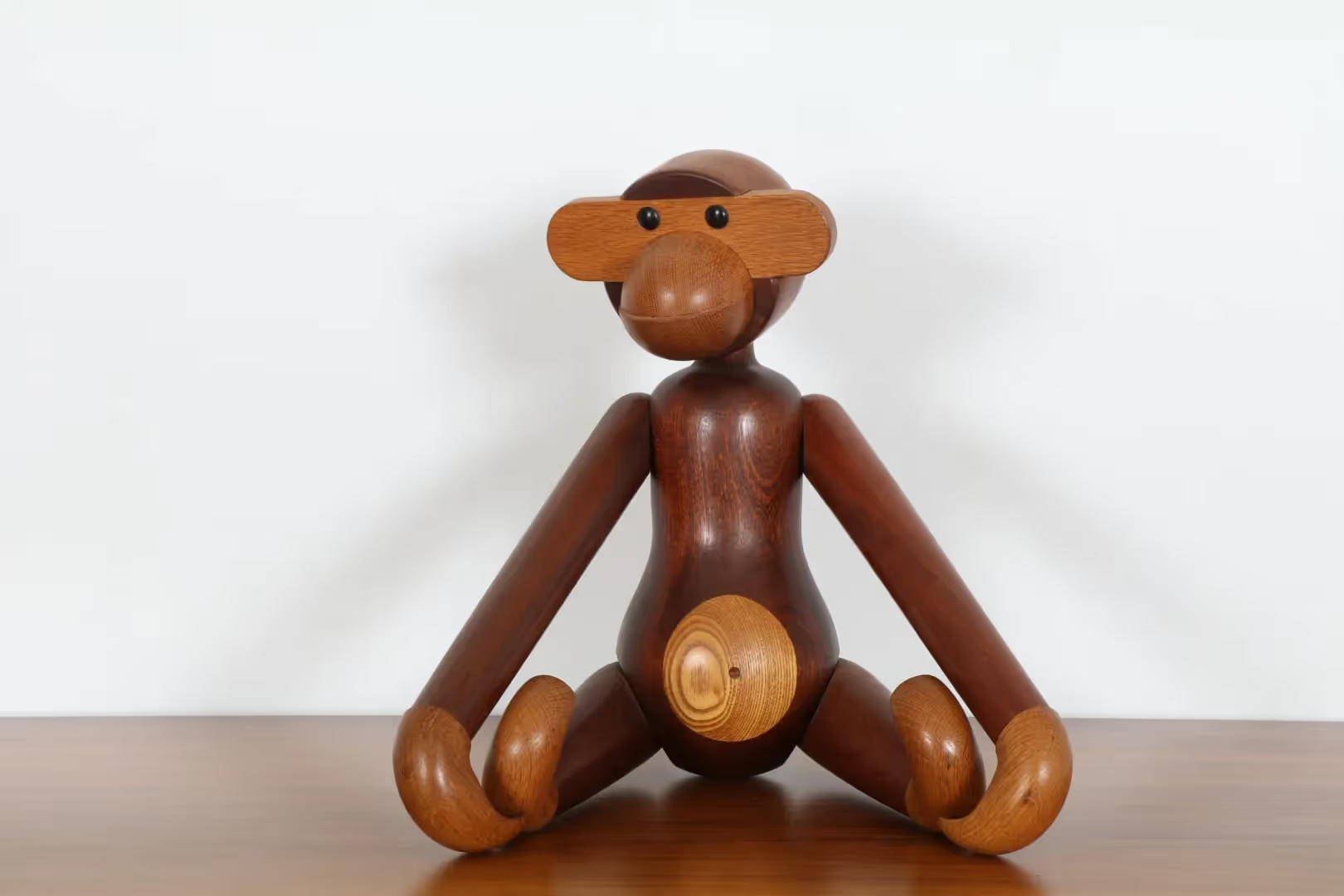.svg)
Kay Bojesen began his career as a silversmith and received an apprenticeship at the Georg Jensen workshop in 1907. His early work was influenced by the art nouveau movement, which combined organic shapes, references to nature, complicated ornamentation, and sophisticated detailing. After completing his apprenticeship Bojesen travelled around Europe, gathering new experiences and inspiration. When he returned to Copenhagen during the 1910’s, Bojesen become a big advocate for functionalism, which characterized his subsequent work.
In 1913 Bojesen opened his own workshop and quickly became one of the most skilled and acknowledged silversmiths of the era, winning international awards for his progressive designs. In the 1930s, Bojesen sold his silversmith workshop and began experimenting with wood. He quickly fell in love with the new medium, which led to the creation of some of the most iconic wooden toys of the mid-century era. The most celebrated is Bojesen's cheeky monkey from 1951, a design initially created as a coat rack for a children’s room.
Bojesen designed the monkey with long arms that would bring the hook down to children’s height, and with legs that could be used to hang clothes on. During the first month over 600 monkeys were sold and the iconic design has become coveted by children and adults alike. Today Kay Bojesen's designs are just as relevant in expression and function as the day they were originally created.
"Design should do the same thing in everyday life that art does when encountered: amaze us, scare us or delight us, but certainly open us to new worlds within our daily existence.”










